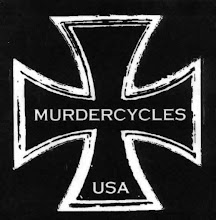

A Pilot Takes To The Air Again In His Old Bomber - Courant.com
HARTFORD — — Harry Schmidt was a hot-shot fighter pilot when he was hired in 1955 to be a test pilot for Pratt & Whitney. He was to work at Edwards Air Force Base in California, testing the performance of Pratt jet engines in the F-100 Super Saber fighter.
For his first three or four months with the company, however, Schmidt remained in East Hartford and was assigned to fly the company's modified B-17G bomber from Rentschler Field. The Allies used B-17s to bomb Germany into submission in World War II. Pratt's B-17, which was completed late in the war and never saw combat, was used to flight-test the company's turboprop engines.
On Saturday night, Schmidt, now 82, retired and living in Cromwell, climbed aboard that same old bomber and took to the air once again. He flew the Flying Fortress from Brainard Airport, where it had been on display, to Sikorsky Airport in Stratford, where it is again open to the public.
--------------------------------------------------------------------------------
[Sample Our Free Breaking News Alert And 3 P.M. News Newsletters]
--------------------------------------------------------------------------------
For much of his flying career, Schmidt strapped himself into nimble jet fighters. "A jet fighter is so soft on the controls, you can fly it with your fingertips," Schmidt said. "With a B-17, it's like flying a Mack truck. It's heavy. You've got to use all your strength to do anything with a B-17."
But it's still fun, he said.
"It's not very often, this late in life, you can meet up with the airplane you flew when you were just a kid and go fly it again," said Scott Maher, operations director for the Liberty Foundation of Douglas, Ga., which obtained the former Pratt & Whitney B-17 and restored it. Maher said his organization was happy to invite Schmidt to fly the old bomber once it learned of his connection to the aircraft.
To test turboprop engines, Pratt had the aircraft's builder, Boeing, move the cockpit back and re-balance the aircraft. Pratt then installed a turboprop engine in the nose.
The odd-looking aircraft, with five engines, served Pratt & Whitney into the late 1960s, when it was donated to the Connecticut Aeronautical Historic Association in East Hartford. It was heavily damaged in 1979 when a tornado hit Windsor Locks and the New England Air Museum. The Liberty Foundation subsequently took possession of the wreckage and restored it.
"Most of the flights that I participated in were engine re-light tests," Schmidt said. They'd climb to about 35,000 feet, then shut down the turboprop engine and let it get cold. "That was the intent of that particular flight, to see if we could get an engine that was really cold started again at 35,000 feet."
The B-17 was difficult to maneuver on the ground because the cockpit was set so far back to make room for the 15-foot-long turboprop engine. "It made it difficult to take off and land," Schmidt recalled. "You just couldn't see anything up ahead."
The U.S. Air Force taught Schmidt to fly, and he served during the Korean War. He was stationed at Okinawa and flew F-94 Starfires on missions to intercept U.S. B-29 Superfortress bombers returning from missions over North Korea. The Air Force feared that the Soviets would try to infiltrate the returning bomber flights with their own TU-4 bombers, which were copies of B-29s that the Soviets had obtained during World War II. Schmidt said he'd fly among the returning B-29s, checking tail identification numbers.
He ended his Air Force career at Otis Air Force Base on Cape Cod, where he served in an interceptor squadron under Maj. Daniel "Chappie" James Jr., a Tuskegee airman who would become the first African American to reach the rank of four-star general in the Air Force.
On his way from Cape Cod to his parents' home in Yonkers, N.Y., Schmidt stopped at a Howard Johnson's in East Hartford for lunch and called Pratt & Whitney about an interview. He'd seen an ad in the Sunday New York Times that Pratt was looking for an engineering test pilot with extensive jet experience. Schmidt had an engineering degree from Rensselaer Polytechnic Institute in Troy, N.Y., and more than 1,000 hours of jet experience. "Back in those days there weren't a lot of people with over a 1,000 jet hours," Schmidt recalled.
That afternoon he was interviewed by Pratt's chief test pilot, and a few weeks later he was hired.
While testing jet engines for Pratt in California, Schmidt got to experience a dynamic period in jet aviation. In the Air Force, he flew F-80 Shooting Stars, the Air Force's first operational jet fighter, and F-94 Starfires, an all-weather interceptor that was the first jet assigned to the Air Force's Air Defense Command. Both were subsonic.
As a test pilot, he spent most of his time flying the F-100 and the F-101A Voodoo. He also got to fly the F-102 Delta Dagger and the F-105 Thunderchief. All were powered by Pratt engines, and all exceeded the speed of sound.
After about five years, Schmidt decided to leave the exciting but dangerous world of the test pilot.
"I succumbed to my parents' desire that I lead a more rational life where I was not risking my life every day," he said. He moved back east and got into the consulting business.
Copyright © 2010, The Hartford Courant


No comments:
Post a Comment